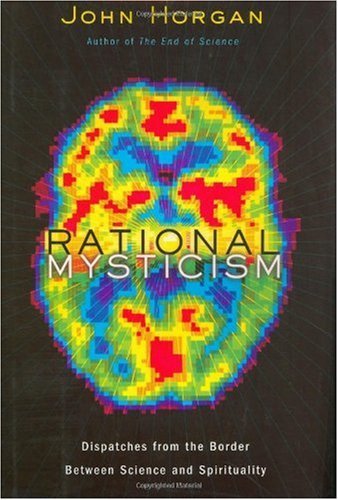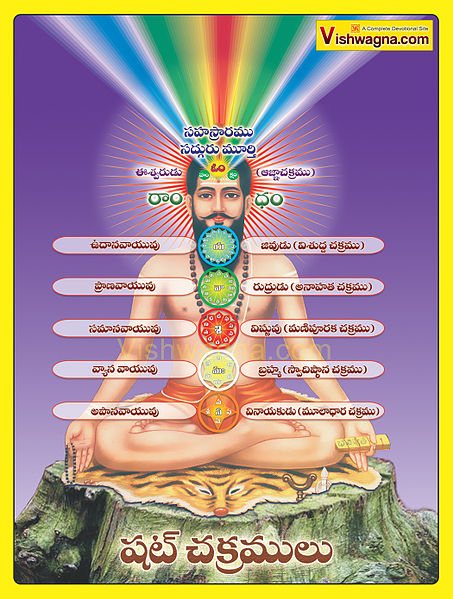
This is a book I thought long and hard about highlighting. I expected great things and was overall disappointed. Unfortunately John Horgan is a reductionist materialist and despite the access he had to various spokespeople on mysticism, he remains thoroughly unconvinced. He is a science writer who holds the dogmatic party line through the entirety of the book. That said, I think some valuable perspective can be gleaned from the people Horgan talks to. It’s worth the read to get an overall feel for the modern history of the topic and hear from some of the players.
Horgan begins with a definition of mysticism within the historical context. He interviews Huston Smith who discusses mysticism as a cross-cultural, cross-religious experience. Smith represents the notion of the perennial philosophy. The author’s search next takes him to a two day conference in Chicago where mysticism is treated as a literary phenomenon. These scholars know in great detail the texts left behind by Eckhart, St. Teresa of Avila, Shankara, etc. But sadly, none of them has any personal experience with anything remotely mystical. The journey continues with an interview of Ken Wilber dubbed ‘the weightlifting Bodhisattva’ by Horgan. Wilbur stands behind Smith adhering to the perennial philosophy but also embraces science as a way to explore and define mystical experience.

Photo: Thanabadhi
Important information is raised in the chapter called Can Neurotheology Save Us?. Horgan visits with Andrew Newberg, the doctor featured back in 2001 in Newsweek’s article, “God and the Brain: How We’re Wired for Spirituality.” Wouldn’t it be nice if brain scans could prove mystical states and help us to understand them? Unfortunately, a review of data collected on all sorts of meditation doesn’t support any nice clean conclusions according to Jensine Andreson, a theology professor at Boston University. And that in turn brings into question all the benefits touted for meditation. A review of the studies looking at meditation and its benefits Andreson believes, are poorly designed and won’t hold up to scrutiny. Of course, as it relates to mystical practice, mystics don’t meditate to lower their blood pressure but I would concede that a whole lot of Americans do increasingly view meditation as a health practice. Should they?
Continuing the scientific pursuit of mystical states, Horgan interviewed Michael Persinger of Laurentian University, Canada. Starting in the 1980s, Persinger began studying the brain’s response to electro-magnetic pulses to certain areas of the brain. 40% of Persinger’s test subjects experience a presence. The Canadian magazine Mclean’s called this device, “the God machine.” Persinger maintains that he has not addressed the God question with his work, rather his interest is in understanding the electrical pattern of the brain that leads to religious belief. But does the machine produce mystical experiences? No. Apparently, no one tested has reported the typical sensations of bliss, unity, or ineffability commonly reported by mystics. Scientific attempts to link temporal lobe excitation or epilepsy to mystical experience do not hold up either.

Horgan next turns to practitioner of Zen and neurologist, James Austin who penned the book, Zen and the Brain. Austin calls his approach perennial psychophysiology. Instead of gaining metaphysical insight, Austin thinks the mystic undergoes deep changes in personality. Someone who has had these experiences becomes more stable, more compassionate, and more selfless. As a specialist in brain disorders, Austin attempts to separate healthy mysticism from other illnesses. His approach relies on the idea that mystical experience releases excitotoxins which cause the loss of neurons. This in turn, allows us to get rid of those things that distort our view of reality. This is as scary as it is fascinating. For me, it makes mystical experience similar to brain damage. Can that really be?
No book on mysticism would be complete without a foray into drug induced mystical experience. Horgan looks at the history of LSD, DMT, and ayahuasca. He visits Stanislov Grof, who is involved in the transpersonal psychology movement. Grof believes that we must move into a new paradigm where mind has primacy over matter (the book was published in 2003, not a unique idea now). There’s an interesting discussion of Rick Strassman’s work as outlined in DMT: The Spirit Molecule. The colorful Terrence McKenna makes an appearance in a later chapter where he advocates the use of psychedelics.

Photo by: vishwagna.com
The book is a nice romp through lots of questions with little in the way of conclusions. I often had the feeling that the author was totally out of his depth. Why did this topic appeal to him? He remained a science writer who attempted to fill pages. Most of them are interesting. I wonder what the book would have looked like with another author or even what the book would look like if updated.



I didn’t read through the whole post…but if Wilbur is in there along with others of his ilk, that’s all I need to know. Which sounds brittle at first glance, but what I observe is that we can haul our materialistic slants into the enlightened state and it has only a limited relevance. You climb the tree, but you don’t go out on a limb to find the furthest fruit.
To engage the depth that these states offer requires activating and using parts of cognition that do not appear to be as present as they are in such a literal and material focus….the brain is a mirror for those energies in the universe. You need to use both. The fullest union brings the ecstacy of St Theresa and a deep view into how the universe works, what the Vedas describe as the secret knowledge. Rational mind sets become an impediment and you have to go all the way into the irrational in order to activate the capacities, the furthest fruit. No helmet that I have observed has achieved this as a bridge so we know how to experience it from then on without aids. And I’m all for what works, but creating a sense of presence may be different from creating the sensitivity to know when a multidimensional entity IS in the same “place” as you. But who knows?
I think we have so much we need to work on using methods that can work exceedingly well here and now that are natural and noninvasive it would be a shame not to use them. A glance from the right person is sometimes all that it takes.
LikeLike
Dear Ellis Nelson, Thanks for what looks like an extremely capable summary/review of this interesting though seemingly disappointing book. You maybe relieve us of the reading of it while pointing to some of the authors Horgan talks about. The dialogue between scientists and experimenters in altered statestends to be a ‘dialogue des sourds’ (dialogue of the deaf) and yet we need such a dialogue. A pity scientists/rationalists never seem to have actually had any mystical experiences, and a pity most mystics don’t know much up to date science, or even want to. Thanks again for this sane and helpful summary/review, Sebastian Hayes
LikeLike
You’re most welcome, Sebastian.
LikeLike
I’ve read a number of articles re: the God Machine, and it seems that part of the controversy surrounding it has to do with the fact that when used, it inhibits the part of the brain which helps a person identify their place in space and time and opens them up to the feelings of being everywhere at once and being linked to all things. I found that fascinating because I seem able to do that just by meditating. So, for me, it was nice to see some confirmation of what I had felt/experienced on my own.
LikeLike
Yes, I can understand that. I think we see this research through our own lenses.
LikeLiked by 1 person
Quite an interesting perspective! I myself am found of ‘moving meditation’ but I do understand many people’s need for proof, even though it doesn’t actually affect the outcome
LikeLike
I’m more successful sitting but moving meditations do work for others. Whatever the practice, we have to keep at it!
LikeLiked by 1 person
Well said!!
LikeLike
Sounds like he was trying to prove that mystical experiences only happen if they can be scientifically proved. How can an average person meditate if connected to electrodes? Only an experienced person who is skilled at shutting out surroundings could do that. But, I know that it can slow my heartbeat and breath allowing a deeper relaxation state. My words are inadequate, but I think you can grasp what I’m saying. sd
LikeLike
The author is a science writer so this kind of proof would make him comfortable. I think Americans are very keen on scientific proof of things in order to justify them. We’re just brought up this way.
LikeLike
There are only a handful of reviews for this book (and they are all over the place) and it’s no longer available in hard copy. The author should be credible, but there has been a lot of distortion by media over this topic.
LikeLike
Persinger’s work – has – produced mystic experiences with his God Machine. There are a couple of accounts in Franks’s “The neurotourist”, while skeptic Michael Shermer had an out of body experience. One of Persinger’s experiments has even been replicated. Perhaps the apparatus will be developed further in the coming years, but the statement that it hasn’t produced mystic experiences doesn’t seem to be true. Persinger reports that 80% of his subjects reported a feeling of a presence, not the 40% given here. I’ve been doing some reading about this lately, and there seems to be a few errors here.
LikeLike
This is what Horgan wrote back in 2003.
LikeLike
Here’s the link for that book:https://www.amazon.com/Neurotourist-Postcards-Edge-Brain-Science/dp/1851687963/ref=mt_paperback?_encoding=UTF8&me=
LikeLike